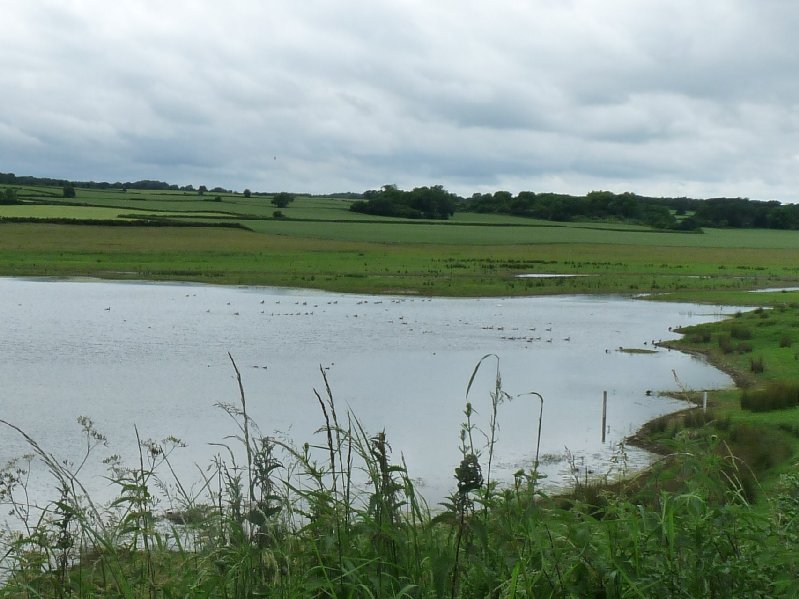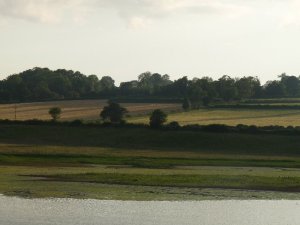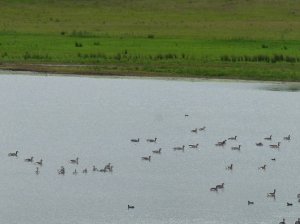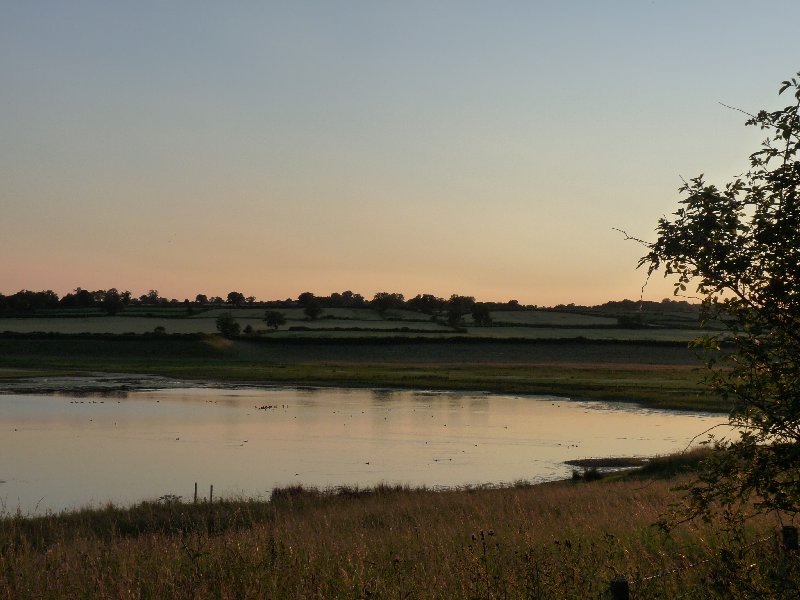
Not far from here, only about two miles as the crow flies, is a nature reserve, Nosterfield Local Nature Reserve. And ‘as the crow flies’ is an appropriate way to measure the journey there, because above all else, it’s a bird reserve. Even more than that, it’s a wetland reserve.

Until the 1990s, this was a landscape quarried for its sand and gravel, exposing the underlying limestone and fluctuating water courses. Even as the land was worked birds flocked here in search of insects. Once the quarries closed, the land proved unsuitable for agriculture: the intermittent flooding saw to that.
Wildlife took the site over. Wading birds adore the muddy margins and insect-rich grasses. Natives such as lapwing and curlew breed here, whilst many other species, such as sandpipers and godwit drop in as they migrate. Dozens of other species of bird make this their home, holiday destination, or stop-over site. At the moment, harvest time, Canada geese are exploiting the riches of the harvest. If they’re not noisily camping out in the wheat field just behind our house, you can be sure they’ll be at Nosterfield.
Since 1996, the area has been a nature reserve. A group of local naturalists succeeded in buying the site, having formed the Lower Ure Conservation Trust. They manage the site to exploit its already abundant resources. The fluctuating water levels – up to three metres a year variation is not unknown – means that there is everything from muddy shallows to small shallow pools to deeper sheets of water. There’s something for everyone, if you’re a bird who likes water. Or even if you’re a bird such as a wagtail, linnet or twite, who doesn’t.
The site supports a huge variety of wild flowers and grasses. That means there are insects, butterflies such as common blue, brimstone, wall brown and white-letter hairstreaks and moths too. There are rabbits and hares: while voles and shrews are preyed on by kestrels and barn owls. Summer-grazing cattle and sheep assist in managing the landscape: one way or another, this is a success story.

We simply aren’t birders. Not yet. But this reserve is doing much to help change all that. There is a series of well-managed hides, and best of all, a comfortable unstaffed information centre, with piles of illustrated leaflets and books to help us identify what we’ve seen. It’s a serene and beautiful place to spend a quiet couple of hours watching the soap opera of bird life unfold, as they feed, raise young, quarrel, swim and wheel about above. We love visiting at different times of day, and look forward to coming throughout the seasons to see how the local bird population changes. By this time next year, we may be able to identify much of what we see. Maybe.




How lovely to have this almost in your backyard! I believe I see a “birder” designation in your future.
LikeLike
You could be right: we ought to try, anyway.
LikeLike
Lovely article – I can see the reserve from my upstairs front windows.
I can always tell that summer is passing when I see and hear the geese flying low over my house.
I’ve seen an owl there a couple of times, sitting on one of the fence posts in the middle of the day. Plus there are often some wonderfully iridescent dragonflies down near the more isolated hide.
LikeLike
And how lucky we both are to have it all so near: particularly you. Those geese are so noisy just now, aren’t they? Better than traffic though….
LikeLike
Beautiful landscapes…lovely light
LikeLike
It’s a lovely spot. Thank you.
LikeLike
SO beautiful! We live on a bay, at the end of which is a wetlands reserve, so we see a lot of bird action, too, but not the variety you do! For unknown reasons, I’ve always been more interested in waterfowl than other birds so it’s fun to live on a lake. We mark seasons by the passage of Canada geese, too, and I’ve just noticed they are showing up in the last week. It’s too early for summer to be ending!
LikeLike
I know! Canada geese, dew in the mornings, ripening berries….. it’ll all end in mist and fog….
LikeLike
We are so fortunate to have far-sighted folks who see the big picture of preserving the natural environment for the present generation and for future generations. It is wonderful to be outside and enjoying the sights, smells, and touch of the natural world.
LikeLike
Isn’t it? We’re really appreciating our new country life: I even startled a deer as I was going to choir this evening. Very exciting!
LikeLike
……..oh Margaret, my heart is bleeding …….such lovely landscape, birds, florwers, nature pure……xxxxxxxanna
LikeLike
It is indeed a great place xx
LikeLike
It looks a beautifully peaceful site. Like some of your commentators we find the geese migrations marking the change of seasons. And like you I’m hopeless and identifying birds – by look or sound. I love ‘tweet of the day’ on R4 but struggle to hear the difference sometimes and certainly can’t retain the sound. Useless!
LikeLike
I love ‘tweet of the day’ too. But yet again, we may have to call on Kalba, twitcher extraordinaire, to help out.
LikeLike
Surely there’s something Kalba can’t do!
LikeLike
I doubt it. Really.
LikeLike
You really are living in an idyllic sounding rural environment. Looking forward to your birding posts!
LikeLike
I think you might have a long wait. I have a lot to learn. But yes, our surroundings are wonderful.
LikeLike